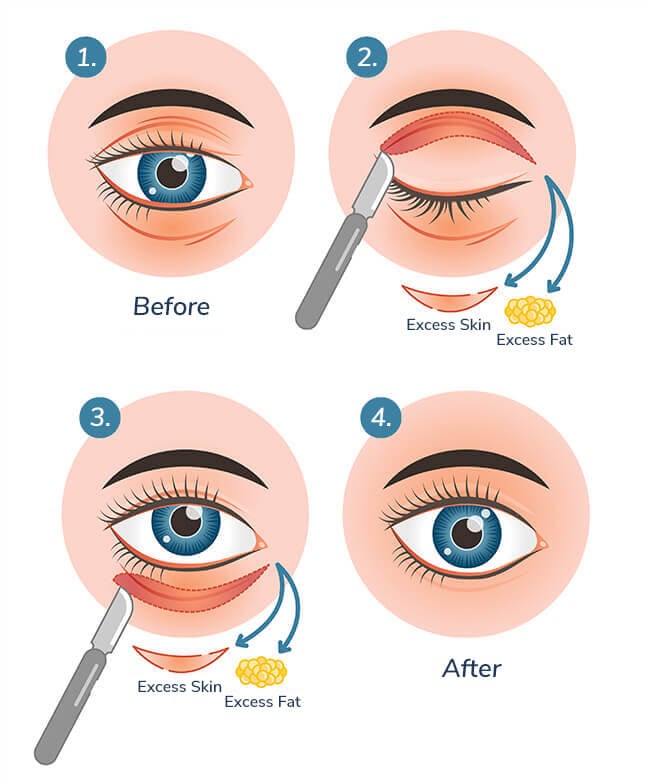Blepharoplasty
Schedule an Appointment
Call 713-668-6828
As we age, the delicate skin around the eyes can appear puffy or saggy. The eyelid skin stretches, muscles weaken, and the normal deposits of protective fat around the eye bulge. The surgical procedure to remove excess eyelid tissues (skin, muscle, or fat) is called blepharoplasty.
Blepharoplasty can be performed on the upper eyelid, lower eyelid, or both. The surgery is performed for either cosmetic or functional reasons. Sometimes excess upper eyelid tissue obstructs the upper visual field or can weigh down the eyelid and produce tired-feeling eyes. Most often, people choose blepharoplasty to improve their appearance by making the area around their eyes firmer. When blepharoplasty is performed to improve vision, rather than for cosmetic reasons only, it may be covered by insurance.


The surgery is usually performed on an outpatient basis and can take one to three hours. Upper lid incisions are made in the natural crease of the lid, and lower lid incisions are made just below the lash line. A procedure for lower lid blepharoplasty, called transconjunctival blepharoplasty, removes excess fat through an incision inside the lower lid. Incisions are closed with fine sutures.
Swelling, bruising and blurry vision are common after blepharoplasty. Stitches are removed three to five days after surgery, except in the case of transconjunctival blepharoplasty where the self-dissolving sutures require no removal.
Possible complications associated with blepharoplasty include bleeding and swelling, delayed healing, infection, drooping of the upper or lower eyelid, asymmetry, double vision, and dry eye. It is important to note that the puffiness of the fat pockets may not return, but normal wrinkling and aging of the eye area will continue.

